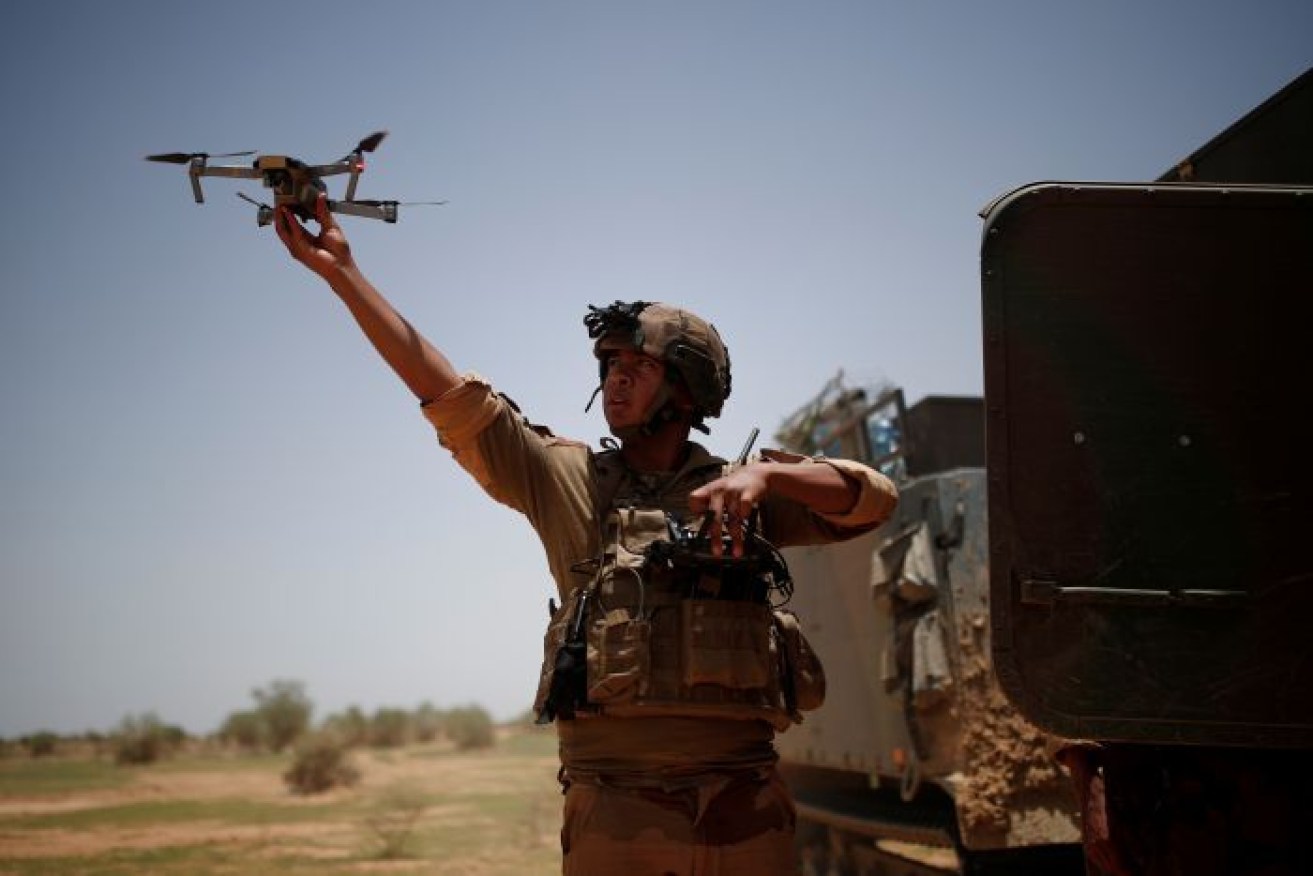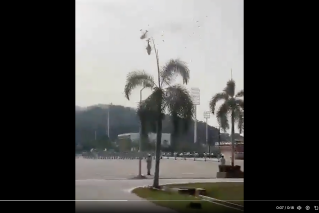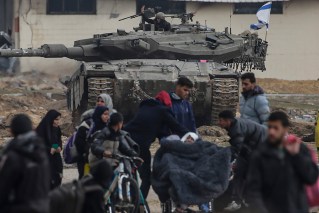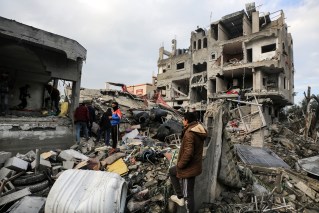Drones are levelling the playing field in the asymmetrical arms race — and superpowers are worried

Weaponised drones are no longer only the plaything of the world's major armies. Photo: Reuters
The potential use of drones to cripple as much as half of Saudi national oil production this week highlights a growing threat in modern-day conflict.
The attack has shown that Saudi Arabia — the world’s third largest defence spender — is incapable of defending arguably its most protected non-military installation in Abqaiq.
It is estimated to have halted around 5 per cent of international crude output, has shocked markets and spiked prices globally.
Only a decade ago, such an attack by a low-cost, remote weapon systems was largely unthinkable.

Iranian Saegheh drones can be equipped with up to four bombs. Photo: Reuters
And players on the world stage have seized on the shift, with groups such as Islamic State and Mexican drug cartels creating their own improvised explosive vehicles from rudimentary hobby kits purchased online and in stores.
Ten years ago drone warfare was the purview of a select group of powerful countries like the US, the UK and Israel, with ominously named platforms such as Predator, Reaper and Hermes.
However, times have changed with a proliferation of the technology in both civilian and military markets. Prices have fallen dramatically and capabilities have advanced rapidly.
This has allowed countries with limited defence sectors, such as Iran, to rapidly grow their own drone programs, particularly their offensive capabilities.
Necessity is the mother of invention, and the growth of drone use by non-state actors represents the latest innovation in a never-ending arms race against technologically superior foes.
Not content to simply be dominated in conventional military terms, many groups have sought for ways to undermine their opponents, negating their advantages in novel ways.
Unlike a normal arms race, in which two foes on relative parity seek to match and one-up one another within an existing context (eg tank versus tank), this unconventional approach seeks to change the very rules of the game itself (eg deny the enemy their ability to use tanks at all).

Rocket Propelled Grenades and Kalashnikov (AK-47) rifles are popular weapons because they are relatively cheap and available. Photo: Reuters
Drones aren’t the first weapon that’s changed the game. Previously this was achieved through the proliferation of cheap-yet-effective small arms such as the Kalashnikov series of rifles and the RPG series of launchers.
The simplicity and low cost of such weapons was a strength itself.
Use required only limited training and knowledge on the part of the user. This allowed for widespread distribution among poorly-educated peasants and pastoralists the world over.
Despite their relative crudity, such arms imparted a level of firepower comparable to that of a regular trained, and equipped soldier.
These iconic Soviet weapons would go on to prove themselves time and time again in insurgent conflicts across Asia, Africa, Eastern Europe and Latin America.
It is little wonder that they have become synonymous with resistance and rebellion for many today.

Mikhail Kalashnikov holds an AK-47 automatic rifle during the opening of an exhibition, showing dozens of the 100-odd versions of his basic 1947 design, February 20 1997.
The rapid growth of improvised explosive devices (IEDS) by insurgents during the US occupation of Iraq after 2003 represented another evolution in this race.
Such devices were simple in design, generally requiring only some old artillery shells or mines and an ad-hoc remote detonator, such as a mobile phone.
Despite their uncomplicated nature, IEDs quickly became notorious for their ability to kill and maim coalition forces.
At the same time, their remote nature enabled militants to avoid direct confrontation and denied the coalition the ability to bring their technological and organisational advantages to bear.
Indeed, for only a small financial investment on the part of users, IEDs set off a series of significant reforms and expensive acquisitions in US and other forces as they struggled to adapt to the new threat.
This lead to large-scale purchases of equipment specifically designed to counter them, such as the MRAP program, which cost hundreds of millions of dollars.
The stunning success of IEDs in Iraq saw their proliferation into other theatres such as Afghanistan and Somalia, as other insurgent groups observed and adapted their techniques accordingly.

Their simplicity and effectiveness quickly made IEDs a popular weapon. Photo: Reuters
Today, drones are one of the latest iterations in this asymmetrical arms race — providing insurgent users capabilities that confound even the most high-tech and well-funded militaries.
In the latter days of Islamic State’s defence of its upstart state project, militants made widespread use of drones to strike at Iraqi and Kurdish forces with precision in areas otherwise considered safe.
In 2018, a number of resourceful Syrian rebels were able to stage a “drone swarm” attack against a rear-echelon base that housed Russian bombers.
Up until this point, these warplanes had been able to strike insurgents with impunity, but the attack overwhelmed the base’s defences and left several airframes in ruins.
Over the past several months, drones have been implicated in a number of strikes in Saudi Arabia, alleged to have originated from both Yemen and Iraq.
Abqaiq represents a serious escalation over these previous incidents in terms of damage and global fallout, but it is ultimately an evolution of such tactics and technology, rather than a revolution.
As the Saudi attack demonstrates, the threat posed by drones and similar remote systems is only growing.
Currently, there is some ambiguity as to the precise nature of the attack, with allegations of use of both drones and ballistic missiles.
While guilt for the attack remains difficult to assign in the current confusion, the two main suspects appear to be non-state actors backed by Iran — either Houthi rebels in Yemen, or Hashd al-Shaabi militia in Iraq.
As technologies continue to mature and prices drop, the use of such platforms by insurgents, terrorists, and even political protestors, will continue apace.
While many states have sought to counter this threat through expensive and high-tech means, the fundamentally low bar of entry for drones means that, like the Kalashnikov before them, they will persist as an effective and evolving tool of asymmetrical violence and threat well into the future.
Ben Rich is a lecturer at Curtin University specialising in terrorism, insurgency and political violence in the Middle East.
-ABC








